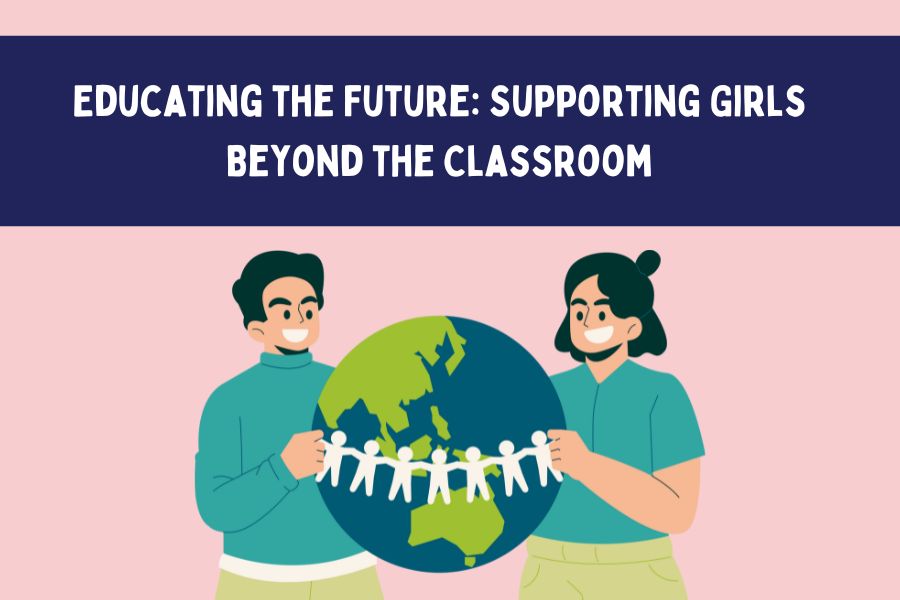Education is more than just textbooks and exams—it’s the foundation of a better future. For girls in India, gaining access to quality education can be transformative, but the journey remains fraught with barriers. Cultural expectations, financial limitations, and inadequate infrastructure continue to limit opportunities for millions of young girls across urban slums, rural villages, and marginalized communities.
This article explores how beyond-classroom initiatives—such as mentorship, skill development, and health awareness—can complement traditional education and ensure holistic development for India’s girls.
Why Girls Need More Than Just a Classroom
While enrollment rates in primary education have improved significantly, classroom learning alone often falls short of addressing the broader needs of young girls. Their overall development depends on exposure to:
- Health education
- Life skills and soft skills training
- Digital literacy
- Emotional and mental health support
- Career counseling
Without these, even educated girls may find themselves ill-equipped for real-world challenges, especially in competitive academic and professional spaces.
Role of Community Organizations in Bridging the Gap
To address these gaps, several NGOs have stepped in with innovative, beyond-school programs aimed at marginalized girls. For instance, a free education NGO in Delhi NCR not only offers academic support but also organizes workshops on menstrual hygiene, leadership, financial literacy, and computer training.
Such programs often work in tandem with government schools and provide:
- Daily academic tutoring
- Access to clean sanitation
- Nutrition and health check-ups
- Parent counseling sessions
- Exposure visits to colleges or workplaces
These holistic interventions help girls not only stay in school but also thrive and think beyond the limits society may impose on them.
Financial Inclusion and Government Support
The government has recognized that education needs to be supported at multiple levels—especially for girls. Numerous programs have been implemented to reduce the cost burden and encourage girls to continue their education beyond primary school.
The government schemes for girl’s education in India play a vital role in creating an enabling environment. Many of these include conditional benefits—cash transfers, bicycles, uniforms, and mid-day meals—targeted at keeping girls enrolled and reducing absenteeism.
Major Schemes Supporting Girls’ Education:
| Scheme | Focus Area | Benefits Offered | Target Group |
|---|---|---|---|
| Sukanya Samriddhi Yojana | Long-term savings for education | Tax-free savings account | Girl children under 10 |
| Pragati Scholarship | Technical education | ₹50,000 per annum | Girls in diploma or degree-level technical courses |
| Balika Samridhi Yojana | Post-birth and school enrollment incentives | Cash incentives | Girls from below poverty line families |
These schemes, when paired with NGO efforts and community support, can create a safety net that allows girls to pursue uninterrupted education.
Empowering Girls with Life Skills
Education must prepare students for life—not just exams. Girls need to be equipped with skills that help them navigate societal expectations, advocate for themselves, and enter the workforce with confidence.
Critical Life Skills for Girls:
- Communication and Assertiveness: To help girls speak up and express themselves confidently.
- Financial Literacy: Basic money management to avoid financial dependence.
- Digital Skills: Familiarity with digital platforms, software tools, and online safety.
- Problem-Solving Abilities: To handle real-world issues, especially in male-dominated settings.
- Health & Hygiene Awareness: For personal well-being and dignity.
Workshops, peer learning sessions, and mentorship programs led by successful women professionals can be life-changing in this regard.
Addressing Health and Safety Concerns
Girls often face challenges that go beyond the classroom—menstrual hygiene, sexual harassment, or unsafe transport are just a few examples. These directly impact attendance, academic performance, and long-term retention.
What Can Be Done?
- Ensure separate and functional toilets in schools
- Provide free sanitary pads and menstrual education
- Create safe transport systems or bike distribution programs
- Set up complaint redressal cells and anti-harassment committees
- Hire more female teachers and counselors as mentors
Creating a safe and supportive learning environment ensures that education is empowering, not stressful.
The Digital Divide and Remote Learning
COVID-19 exposed the glaring digital divide, especially for girls from poor households. When education moved online, many girls dropped out due to:
- No access to smartphones or laptops
- Shared family devices (prioritized for boys)
- Lack of internet connectivity
- Absence of quiet study spaces at home
NGOs and corporate CSR programs are stepping up by distributing refurbished devices, offering low-data e-learning tools, and providing offline learning kits.
But the government and private players must collaborate to ensure long-term solutions that close this digital gap.
Real-Life Impact: Stories of Transformation
Programs that extend beyond books have already transformed thousands of lives.
- Rani, from a slum near Gurugram, joined a local NGO at age 12. She learned English, basic coding, and public speaking. Today, she’s pursuing a diploma in software engineering.
- Sangeeta, from a remote village in Rajasthan, received a bicycle and monthly cash under a government scheme. With that support, she completed Class 12 and is now preparing for NEET.
These success stories prove that when support systems align, potential turns into achievement.
Future Directions and Recommendations
To scale impact and ensure no girl is left behind, a multi-layered approach is essential.
Key Suggestions:
- Public-Private Partnerships: Combine government infrastructure with NGO flexibility
- Monitoring and Data Transparency: Track dropout reasons, learning outcomes
- Community Engagement: Train local leaders to champion girls’ rights
- Curriculum Reform: Include mental health, gender studies, and financial literacy
- Technology Access for All: Subsidized devices and data for underprivileged girls
Final Thoughts
Girls in India are no longer asking for permission to dream—they’re asking for opportunities. Beyond textbooks and syllabi, what they truly need is a system that nurtures their minds, protects their rights, and prepares them for the real world.
Through collaborative efforts—whether it’s a free education NGO in Delhi NCR or a national initiative like one of the government schemes for girl’s education in India—we can create an ecosystem where every girl can become a learner, a leader, and a change-maker.


